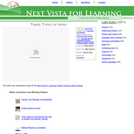
Video about the three types of irony: dramatic, situational, and verbal.
- Subject:
- English Language Arts
- Material Type:
- Activity/Lab
- Provider:
- Next Vista for Learning
- Date Added:
- 03/31/2017

Video about the three types of irony: dramatic, situational, and verbal.
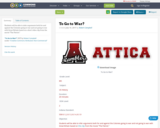
Students will be able to infer arguments both for and against the Colonies going to war and not going to war with Great Britain based on a short video clip from the movie "The Patriot."
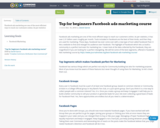
Facebook ads marketing are one of the most efficient ways to reach our customers online. As per statistics
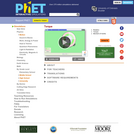
Investigate how torque causes an object to rotate. Discover the relationships between angular acceleration, moment of inertia, angular momentum and torque.
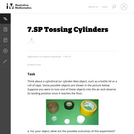
The purpose of this task is to provide students with the opportunity to determine experimental probabilities by collecting data.

A SoftChalk lesson covering the basics of transformations and symmetry in geometry.

All cells, organs and tissues of a living organism are built of molecules. Some of them are small, made from only a few atoms. There is, however, a special class of molecules that make up and play critical roles in living cells. These molecules can consist of many thousands to millions of atoms. They are referred to as macromolecules (or large biomolecules).
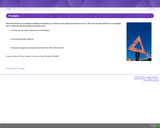
General overview of why and how to apply the triangle congruency shortcuts.
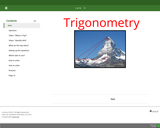
This is a lesson to identify trig ratios and how to setup/solve the equations.

This is a soft chalk lesson that walks students through the challenge of developing a developing a turbine run on renewable energy sources. As part of the lesson, students learn why non-renwable energy sources must be replaced.

Who said that history can’t be fun…or funny!?? There are so many references to history in our daily lives and often times we don’t even recognize them! They bombard us in music lyrics, TV shows, movies, commercials, magazine ads, poems, and even funny cartoons and pictures. Having a solid foundation of historical events that have taken place will help us better understand these references when we encounter them and allow us to realize the impact history has in our lives. If for no other reason, let us learn history so we can at least laugh at the TV show or understand the joke they’re making in the cartoons when they reference these historical events! In addition, references like these can be a handy study aid, acting like mental cues to help us remember complex events and concepts. In this assignment, students will recognize that history surrounds us in pop culture by finding two examples and explaining their historical connection. They will also relate those examples to helping their classmates prepare for the final exam for the course.
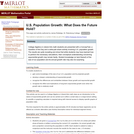
College Algebra or Liberal Arts math students are presented with a ConcepTest, a Question of the Day and a write-pair-share activity involving U.S. population growth. The results are quite revealing and show that while students may have learned how to perform the necessary calculations, their conceptual understanding concerning exponential growth may remain faulty. Student knowledge (or lack thereof) of the size of our population and its annual growth rate may also be surprising.
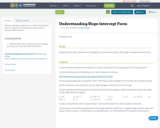
Students will apply equations to an animated coordinate plane to compare how changing the slope and the y-intercept effects the line.
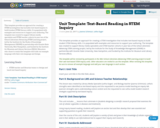
This template provides an approach for creating a STEM investigation that includes text-based inquiry to build student STEM literacy skills. It is populated with examples and resources to support your authoring. The template was created to support library media specialists and STEM teacher cohorts in year two of the School Librarians Advancing STEM Learning project, led by the Institute for the Study of Knowledge Management (ISKME) in partnership with Granite State University, New Hampshire, and funded by the Institute for Museum and Library Services (IMLS). Educators who chose to remix this template will trade out example language with their own language and design.

Students often struggle to find theme in literature--one that is not a bumper sticker, a "moral to the story," or anything that could be applied to more than one story. Understanding what theme is, an implicit argument the author is making, is the first step. Then it gets more complicated as they realize that there are wrong answers (the ones that don't make sense with the story), there are undeveloped answers (ones that don't get far enough past motif but are on the right track), and there are many possible correct answers that can be explained and supported with the text. This activity uses the Generate-Sort-Connect-Elaborate strategy in small groups to help students focus on the details of the story and how they contribute to the overall point of the story. It can be used with any piece of literature you deem appropriate for your students.
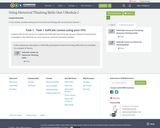
In this module, students will practice the historical thinking skills we learned in Module 1.
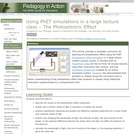
This activity provides a complete curriculum for teaching the photoelectric effect using the PhET Photoelectric Effect simulation in a large-lecture modern physics course. It includes links to powerpoint slides for two to three 50-minute lectures using Peer Instruction with clickers, and one homework assignment suitable for an online homework system. Research has demonstrated that students in classes using this curriculum have a better understanding of the photoelectric effect than students in classes using traditional instruction supplemented by a computerized tutor.